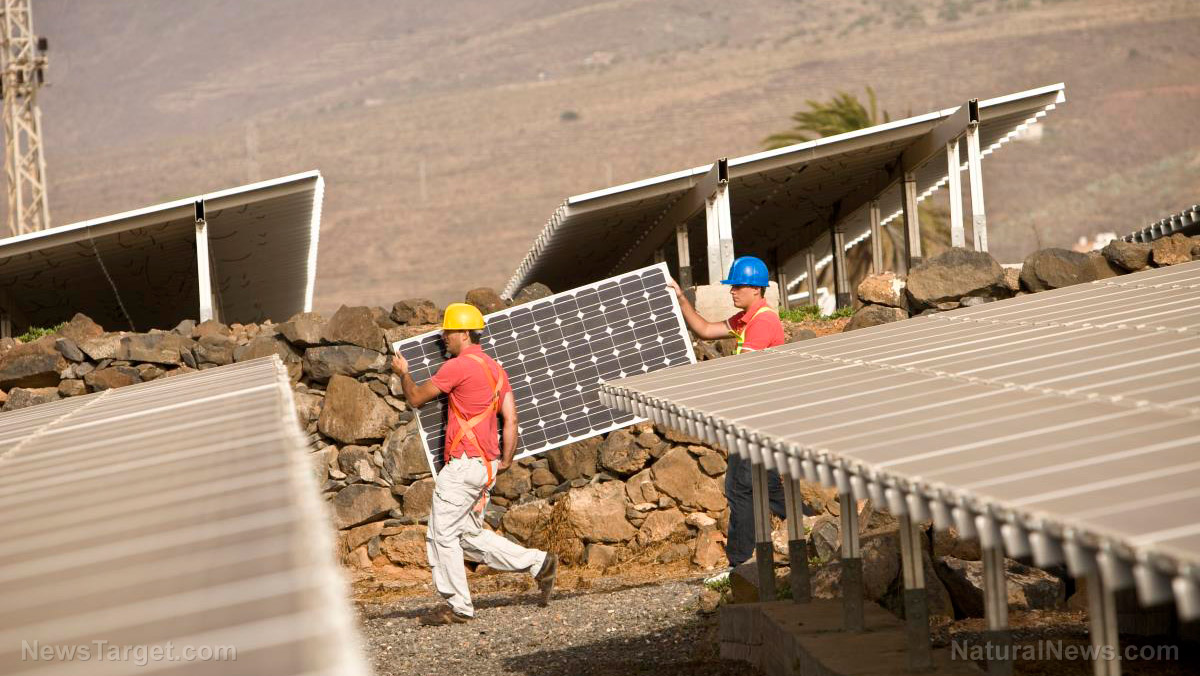
Solar projects do more harm than good
The people said they have not reaped benefits from the solar projects while the stress on their groundwater supply has increased in spite of the bureau's promises that "renewable energy development on BLM-managed public lands will continue to help communities across the country be part of the climate solution while creating jobs and boosting local economies." Developers depend on the groundwater aquifer because there is no other possible water supply in the region, rendering delivery of water from other areas to the development sites extremely costly. The development has drained the water reserves for local communities such as one trailer park, which a property manager said would be "dead without water" if the local shortage continues to get worse. The cost of drilling new, deeper water wells can reach up to $100,000. The BLM has authorized seven utility-scale developments in the area stretching about 19,000 acres already, with more projects under consideration like the 120,000 acres that are available for development in the area surrounding Desert Center. The sacred indigenous sites, ironwood trees and endangered desert tortoises are now vanishing and replaced by solar panels scattered around the local communities. But the people of Desert Center and Lake Tamarisk are starting to push back. After being shut out of conversations about earlier solar development close to their homes, they are determined to be heard as two new solar projects are proposed in the area. "No one took into consideration a community lived out here," said Teresa Pierce, a resident of Lake Tamarisk. While they aren't completely against solar, Pierce said: "We're against it being so close to our community and stealing our water out from our aquifer." Intersect Power, the company behind Oberon and another proposed utility-scale solar project in the region, said in a statement that it had been informed of the problem and was looking into it. Worries over the effect of solar project development on the local aquifer have long existed. According to Noel Ludwig, a hydrologist with the U.S. Forest Service in Colorado, all the studies on the basin agreed that groundwater was being pumped out at near or above the rate at which the basin can replenish the supply. "It's just something that's a groundwater issue – not just in that basin, but around the country and around the world. They've been treating it like a bottomless bank account, without accounting for the long-term and certain implications on people's wells," Ludwig said. Follow GreenDeal.news for more news about solar energy projects and other renewable energy sources. Watch the video below to know more about solar power installation. This video is from the PatchSDA channel on Brighteon.com.More related stories:
Solar panels much more wasteful and toxic than widely believed, warns environmental policy expert. Water infrastructure authorities declare a DROUGHT EMERGENCY in Southern California. California’s “impossible” electric truck mandate could put logistics companies completely out of business. Sources include: WattsUpWithThat.com InsideClimateNews.org Brighteon.comAmazon rolling out PAY-BY-PALM services as new payment tech at all Whole Foods Market stores
By Laura Harris // Share
By News Editors // Share
Deadly new “ISO” drugs on the streets of San Francisco now a leading cause of overdose deaths
By Laura Harris // Share
MEDIA SENSATIONALISM: Sky News blasted for hinting that heatwave caused car fire in LA
By Laura Harris // Share
North Korea advances nuclear submarine program as Kim Jong Un oversees missile tests
By kevinhughes // Share
USCIS touts historic immigration enforcement under Trump administration
By willowt // Share
Nvidia strengthens AI dominance with strategic Groq talent acquisition and licensing deal
By kevinhughes // Share
Landmark study links even light alcohol use to soaring mouth cancer risk
By avagrace // Share











